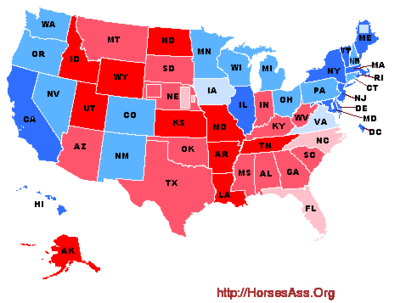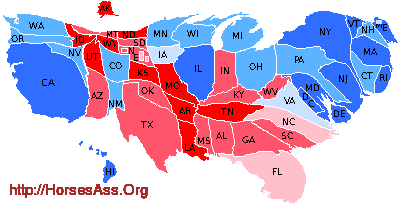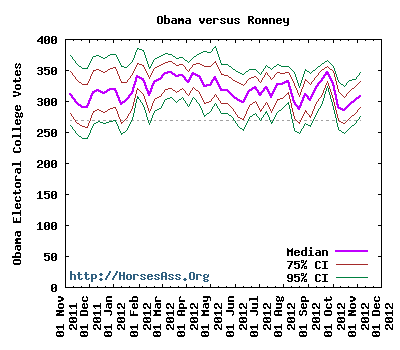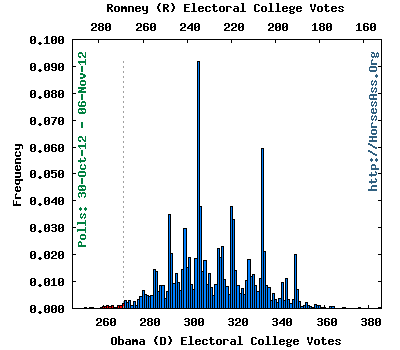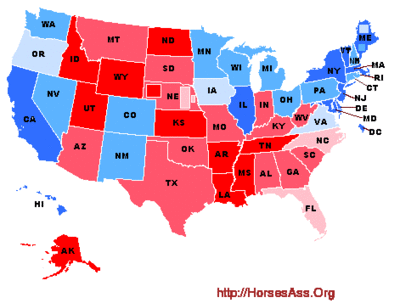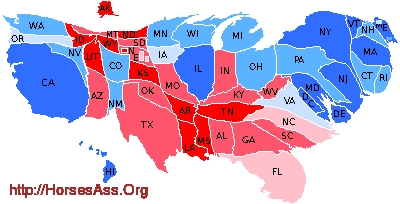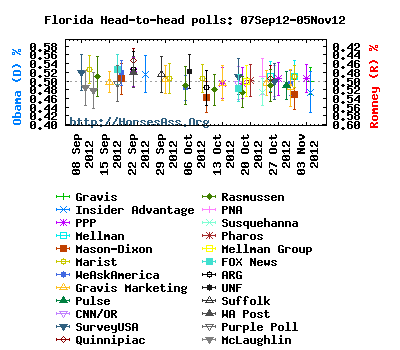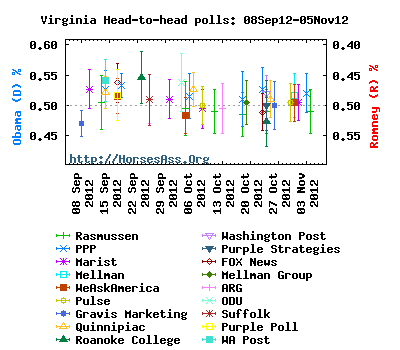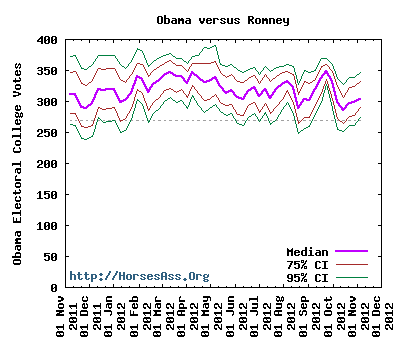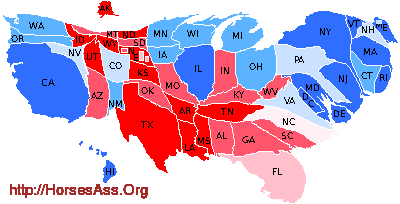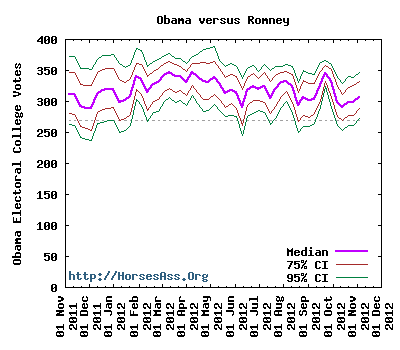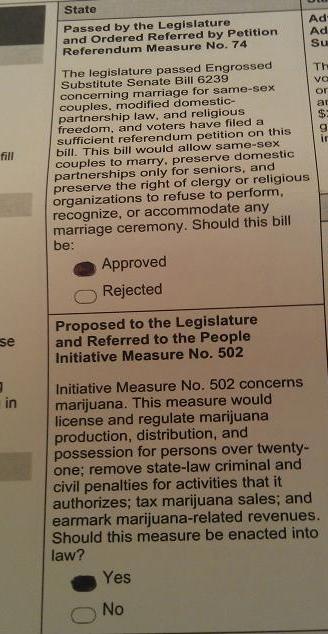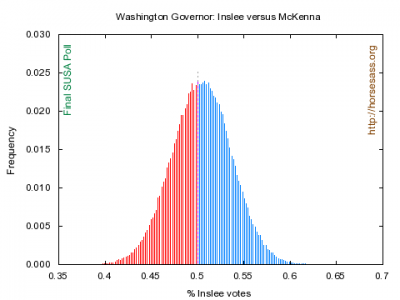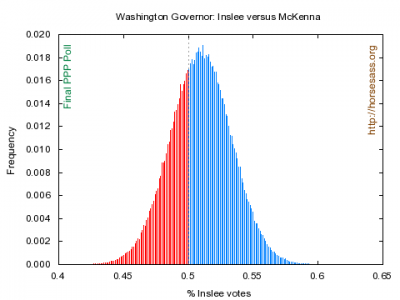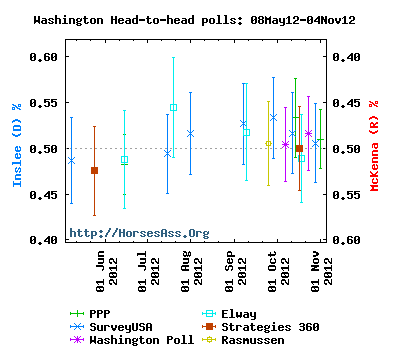Early this morning, Darryl presented a brief discussion of yesterday’s results in the gubernatorial race. He introduced a model of its eventual outcome:
- take the actual county-by-county D-R percentages from November 6
- apply county-specific 2008 turnout percentages
- estimate the final outcome between Inslee and McKenna
This may be, as he explains, a conservative model, in that recent elections have demonstrated a generalized increase in Democratic percentages over the days of post-Election Day tabulations. As I explained in a DailyKos diary about the 2010 Murray-Rossi Senate race (posted on the Friday after Election Day:
During the day on Thursday, 22 of the 39 counties added ballots to their totals, counting a total of 207,170 votes in the Senate race. Patty Murray received 113,085 (54.6%) of those votes, with smarmy huckster Dino Rossi pulling down the remaining 94,085 votes, 45.4% of the day’s total.
As she did on Wednesday, Patty increased her percentage of the vote in most of the reporting counties, 16 of the 22. But that doesn’t come close to describing how she dominated the day. You see, the counties in which Murray did worse on Thursday than she had been doing theretofore (Asotin, Clark, Cowlitz, Grant, Lewis, and Pend Oreille) tallied only 27,836 of the day’s ballots. That is, a mere 13.4% of the Thursday votes were from counties where Patty underperformed. Counties where she outperformed her previous level comprised 86.6% of the day’s counted ballots.
Patty even won the day in several red counties. For instance, she took 50.7% of Island County’s 4031 Wednesday ballots, though her overall votes percentage there is 49.7%. Pierce always seems to hover near the break-even point, and Patty’s 50.6% on Wednesday (22,891 ballots) hardly budged her cumulative 49.7% mark. And then there’s Klickitat County, where Murray’s 52.9% (359 of 688 ballots) was shockingly high. It raised her cumulative share of the small county’s overall vote from 41.4% to 42.3%.
For context, Murray won 50.5% statewide on Tuesday night, 53.4% on Wednesday (cumulatively 50.8%), and 54.6% on Thursday (reaching a cumulative 51.3% over the three days). Two nights after the election, her overall share of the vote had increased by almost a full percent.
So Darryl’s model, wherein the D-R percentage doesn’t change over time, is a conservative one.
I too have developed a model for estimating the eventual outcome of the election. It’s rather different from Darryl’s. What I do is to “believe” what the counties report to the Secretary of State. By which I mean that on each night I assume (pretend might be a better word) that the total number of ballots that will be processed by a county equals the sum of their Total Ballots Counted to Date and their Estimated Ballots on Hand to be Processed, as reported on the SoS’s Voter Turnout page. My estimate consists of combining each county’s current D-R percentages with the sum defined above.
[Read more…]
